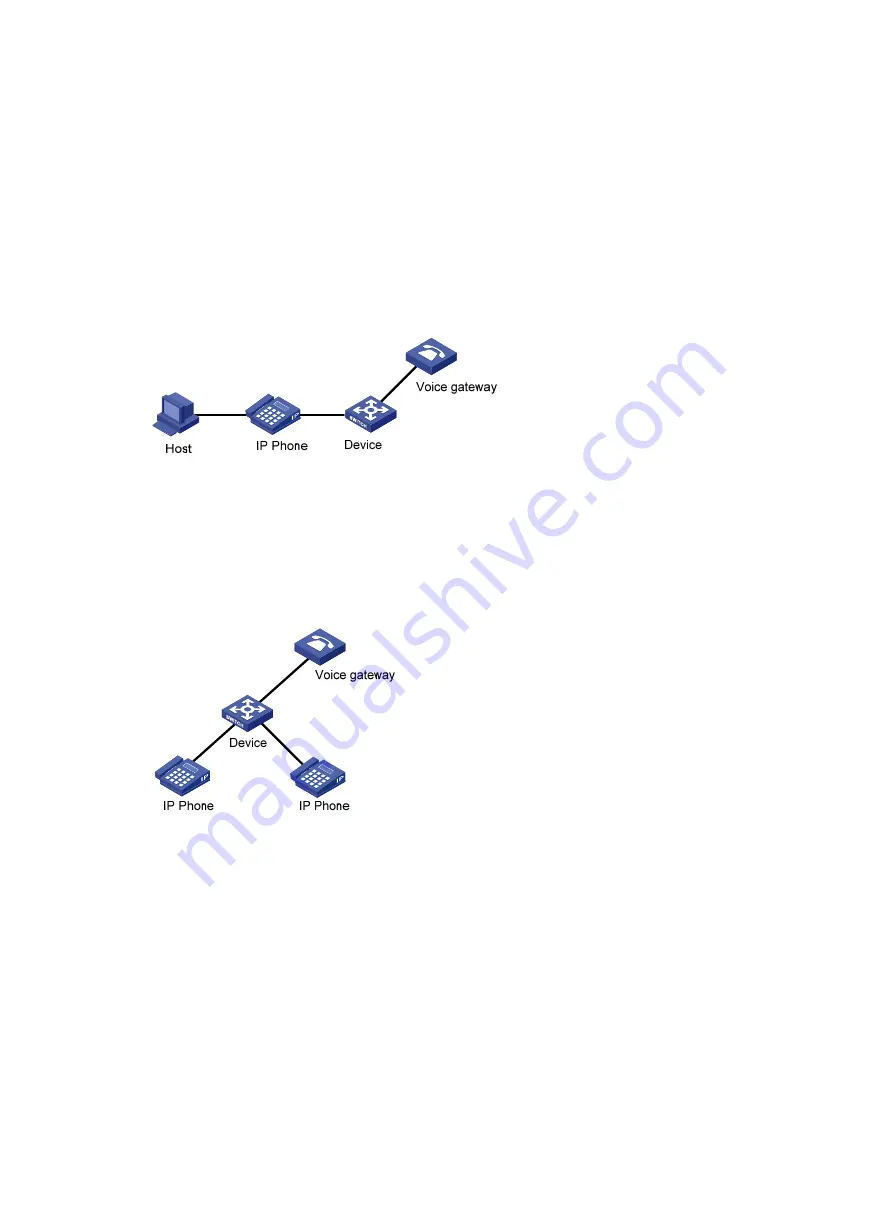
157
IP phone access methods
Connecting the host and the IP phone in series
As shown in
, the host is connected to the IP phone, and the IP phone is connected to the device.
When the host and the IP phone are connected in series, the host and the IP phone must be assigned to
different VLANs, and the IP phone must be able to send out VLAN-tagged packets, so that the data traffic
and the voice traffic can be distinguished. Also, you must configure the port to allow the voice VLAN and
the PVID.
Figure 51
Connecting the host and IP phone in series
Connecting the IP phone to the device separately
As shown in
, the IP phone is separately connected to the device. This connection method
applies when the IP phone sends out untagged voice packets. In this case, you must configure the voice
VLAN as the PVID of the port and configure the port to allow the PVID.
Figure 52
Connecting the IP phone to the device separately
Configuring a voice VLAN on a port
Voice VLAN assignment modes
A port can be assigned to a voice VLAN in automatic mode or manual mode.
Automatic mode
Automatic mode is suitable for scenarios where PCs and IP phones connected in series access the
network through the device and ports on the device transmit both voice traffic and data traffic, as shown
in
The system matches the source MAC address carried in the protocol packets sent when an IP phone is
powered on against the device's OUI addresses. If the system finds a match, it automatically assigns the
















































